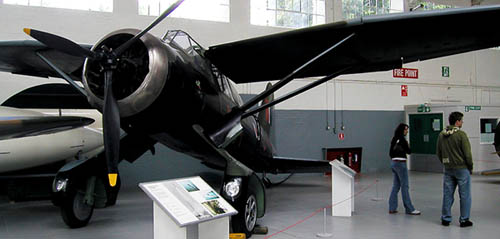Of Pandas and Airplanes
Today, pandas and airplanes. The University of Houston's College of Engineering presents this series about the machines that make our civilization run, and the people whose ingenuity created them.
Writer Ann Ackerman once pointed out that saving a vanishing species is a lot easier when the species is winsome. Take the panda. Pandas process huge amounts of bamboo into manure and make a vast impact on their ecology. Saving them is important if only to stem the environmental alteration of losing them. But that's not why we do it. We try to save them because they're cute.
Now writer Allie Hagerman suggests that the same principle operates with old airplanes. She talks about the Westland Lysander, an airplane you're likely not to've heard of. She compares it to its contemporary, the lean Spitfire with its sculpted lines.
The Spitfire was a fine fighter plane no doubt (although its clunkier older cousin, the Hawker Hurricane, actually did more to save Great Britain in 1940 and '41.) Since many Spitfires were built in the late days of WW-II we've all seen them in air museums.
The Lysander was quite another story. It was a high-winged monoplane, a lot like low-end, privately-owned airplanes today, but larger. Its non-retractable wheels were fitted with big teardrop-shaped covers (then called "pants".) It had an odd gull-shaped wing, with a fifty-foot span. And its top speed was a sedate 212 miles-an-hour; enemy fighters could eat it for breakfast.
It appeared to be a useless old dinosaur, and yet it became a very valuable British warplane. Roughly 370 were made. Canada kept producing them all through the war. So how were these antiques, with their wood and fabric construction used?
When they were used for combat troop support and liaison, they were sitting ducks. But they were useful in air-sea rescue work. They could fly slowly, dropping rafts and supplies without stalling. Finally, in 1942, three Lysander squadrons were formed to make night flights in support of spying and resistance fighters on the continent. They were the perfect machines for that job.
They could land in a short unlit cow pasture at night and get away safely. This ugly duckling among warplanes could do much of the work of a present-day helicopter.
So the pall of secrecy fell over the Lysander just as I undertook to build my then-largest model airplane. It was a balsa model of the Lysander -- beautiful, if only for its oddity. As I worked, I vaguely wondered why Lysanders appeared only in airplane spotting books, but never in coverage of the ongoing war.
Sixty-two years later, at Great Britain's Duxford air museum, I finally got to see one. It was painted black -- lowering and dark -- off in the corner of a hanger. The Lysander is very rare. The Spitfire -- that lovely, but un-endangered, Panda among airplanes -- is found in any large air museum. But this old airplane, secret during the war, remains almost a secret today. This nearly extinct machine is the unbeautiful, unPanda, that helped a defeated Europe stay unconquered during its darkest days.
I'm John Lienhard, at the University of Houston, where we're interested in the way inventive minds work.
A. Hagerman, Dwight's Spyplane. Air and Space, January 2006, pp. 14-15.
For more on the Lysander, see the following site:
http://www.warbirdalley.com/lysander.htm
D. Ackerman, The Moon By Whale Light. (New York: Random House, 1991): Chapter 1, In Praise of Bats.

The Westland Lysander in the Imperial War Museum, Duxford, United Kingdom. Photo by JHL.